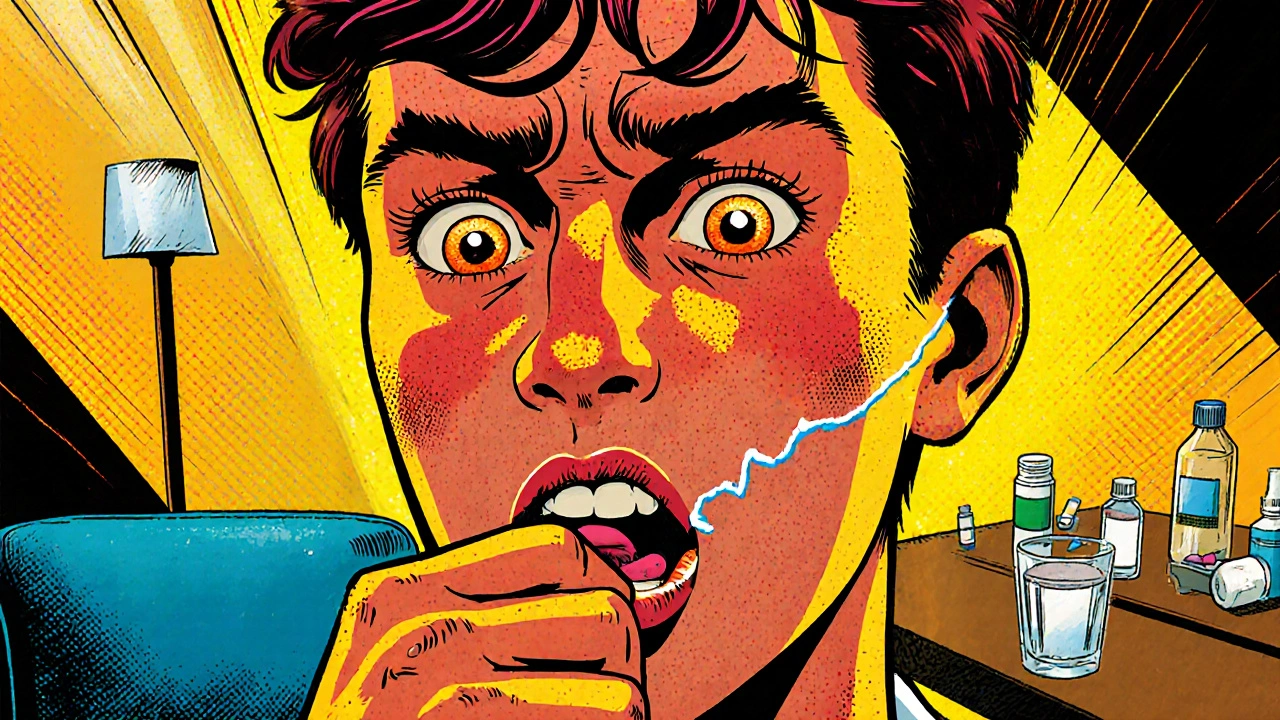
Amitriptyline Overdose: Recognizing Signs, Symptoms & Emergency Treatment
Learn how to spot early and severe signs of amitriptyline overdose, what immediate steps to take, and the medical treatments that can save a life.
When dealing with overdose symptoms, the physical and mental signs that appear after consuming too much of a medication, drug, or toxin. Also known as overdose signs, they can signal a life‑threatening situation. A drug overdose, the event where a person takes a dose beyond the safe therapeutic limit often triggers these symptoms. Similarly, poisoning, the harmful effect of ingesting, inhaling, or touching poisonous substances can produce overlapping signs. Both overdose and poisoning are forms of toxicity, the degree to which a substance can damage the body. Recognizing the patterns early is crucial because overdose symptoms often require immediate emergency treatment, professional medical interventions such as activated charcoal, antidotes, or supportive care to prevent permanent harm.
Overdose symptoms vary widely depending on the substance, amount, and individual health. Stimulant overdoses, like those from amphetamines, tend to raise heart rate, cause agitation, and lead to seizures, while depressant overdoses, such as opioids, often produce pinpoint pupils, slowed breathing, and unconsciousness. Toxicity level, measured by blood concentration and organ impact, influences how severe the symptoms become. Age, weight, and pre‑existing conditions can amplify toxicity, making the same dose far more dangerous for a child or an elderly person. Moreover, mixing drugs—like alcohol with benzodiazepines—creates synergistic toxicity, accelerating the onset of critical signs. Understanding that "overdose symptoms" encompass both visible cues (e.g., vomiting, skin discoloration) and hidden cues (e.g., altered mental status) helps you act faster and call for help before the situation escalates.
Now that you know what overdose symptoms look like, how they differ by drug class, and why toxicity matters, you’re better prepared to spot an emergency. Below you’ll find a curated list of articles covering specific medications, comparison guides, and safety tips that dive deeper into each type of overdose, the signs to watch for, and the steps you should take. Whether you’re a patient, a caregiver, or just curious, the resources ahead will give you practical insight to handle overdose situations confidently and responsibly.

Learn how to spot early and severe signs of amitriptyline overdose, what immediate steps to take, and the medical treatments that can save a life.